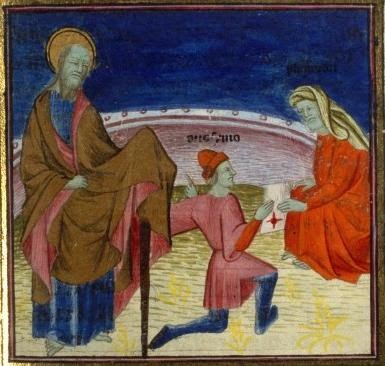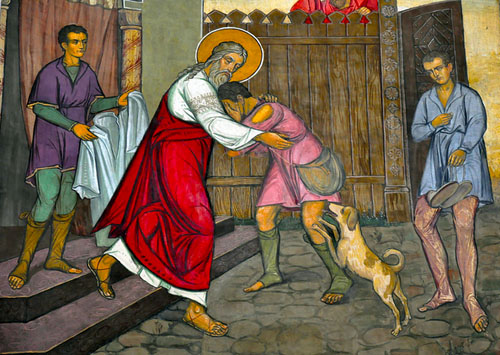Religion and Art: Philemon and Onesimus
 This Sunday’s Gospel (Luke 14:25-33) is visually challenging. You could point to any number of artistic renditions of Jesus carrying the cross.
This Sunday’s Gospel (Luke 14:25-33) is visually challenging. You could point to any number of artistic renditions of Jesus carrying the cross.
The story of Philemon, this Sunday’s epistle, offers an interesting alternative.
Philemon had a slave.
Most people of any stature in Paul’s world had slaves. Some estimate that 45% of the population were slaves. That doesn’t leave much room for the concept of employment!
We don’t know what the problem could have been. Slavery presents any number of issues. Whatever the issue, Onesimus (his name means “useful”) seems to have run away. He wasn’t really in hiding, although the penalties for running away were harsh. He went to Paul. Onesimus was seeking help within the structure of the life to which he was born. He had few choices of where to turn.
Paul was acquainted with Philemon. Paul writes a short but interesting letter to Philemon which artfully talks him into accepting the return of Onesimus with grace. He doesn’t use force. Neither does he give him much choice. Had Paul been a free man, he might have personally intervened. He had to rely on the power of his words and his trust in the nature of Philemon and his reputation.
Onesimus probably carried the letter himself, trusting that his master would read it before dealing with him.
It’s an interesting story to study and imagine. Slavery in its worst sense is such a shameful part of our history.
Today, we have other perfectly legal forms of slavery. We can be slaves to the family or slaves to our jobs or bosses. We can be slaves to popularity or the status quo. We can even be slaves to our churches.
Running away is still a temptation. Where would we flee? To whom could we turn for help?
Here are a couple of renditions of the story of Onesimus and Philemon.

